

Continue the course, or start over?
A solution to this has been around longer than you might expect. This is the story of the Island of Yap.
The inhabitants of Yap employed something called a distributed ledger.
A distributed ledger is a record that is held, shared and synchronized across multiple entities. Each instance serves as a check against all other copies, maintaining the accuracy of the record.
Today, distributed ledgers are digital. But because digital information is easy to tamper with, securing the information can be challenging.
One way to make sure the data is secure and remains accurate is to give it a unique fingerprint.

How can we create a unique digital fingerprint for data? Using a technology called hashing.
Hashing takes an input of any length and returns a cryptographic fingerprint (a mix of numbers and letters) that uniquely represents that input.
Let's play around with making our own hash. Type anything you want into the box below. A unique fingerprint will be created that represents your text.
Now type in "mastercard". The hash for "mastercard" will always match this series, because hashes are one-to-one.
07863e7a6a2154ba864a71b0818c5ed32
f78999430254b2e272d461fcd0d34eb.
The hash created with this algorithm will always be 64 characters long, no matter the length of the input. And importantly, changing just one tiny part of the input, such as using a capital “M” for Mastercard, will result in a vastly different hash.
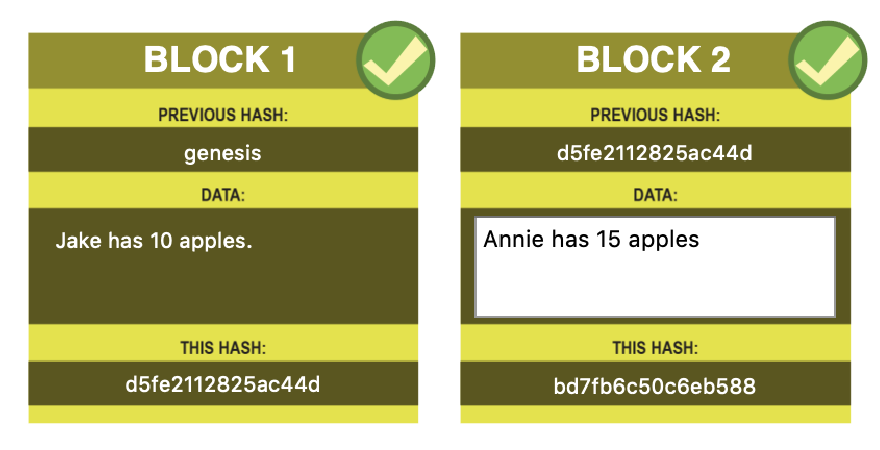
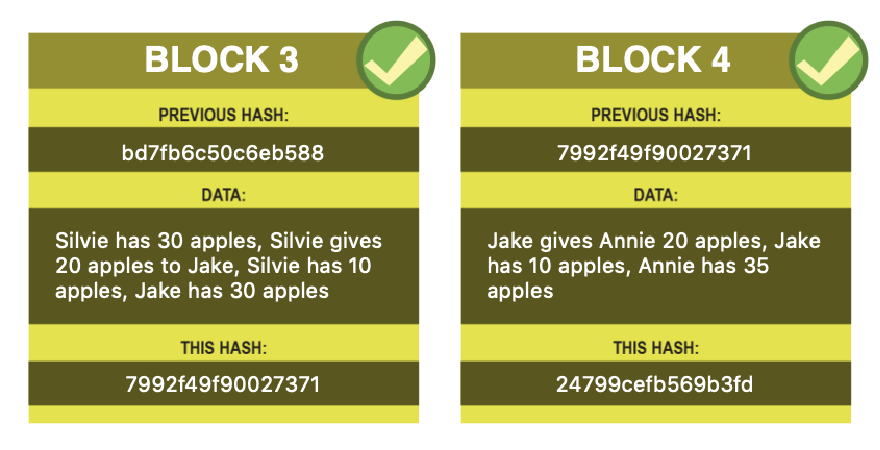
Here is a chain with 4 blocks. Each block is an update to the previous block’s information - a snapshot in time order. In this case, a ledger of apple ownership.
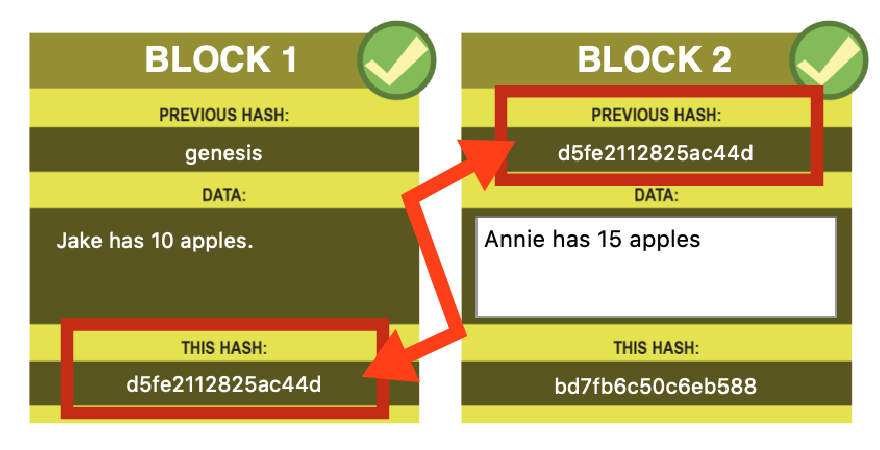
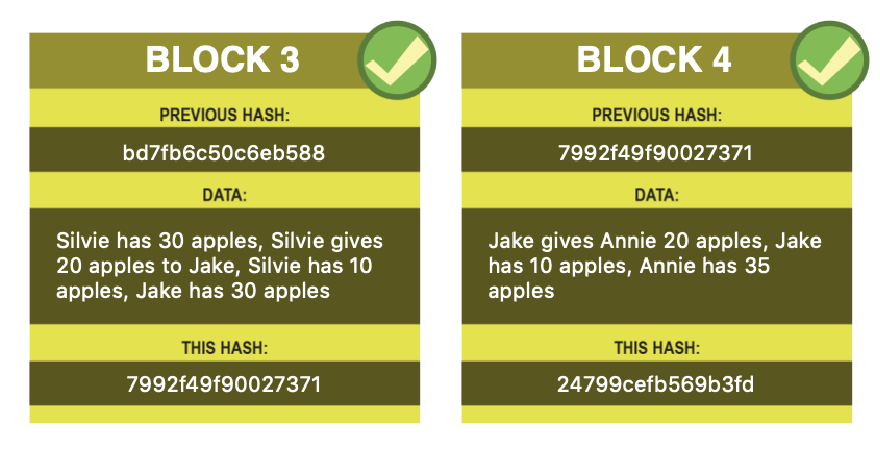
Hashing is used as a way of linking blocks of data.
Each block validates the previous block hash. Then, based on its data, it creates its own hash. Each block is a unique record with a unique history.
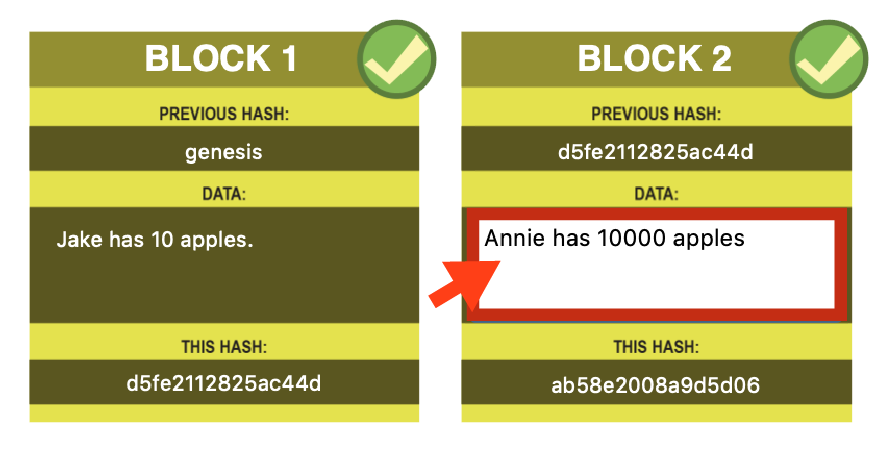
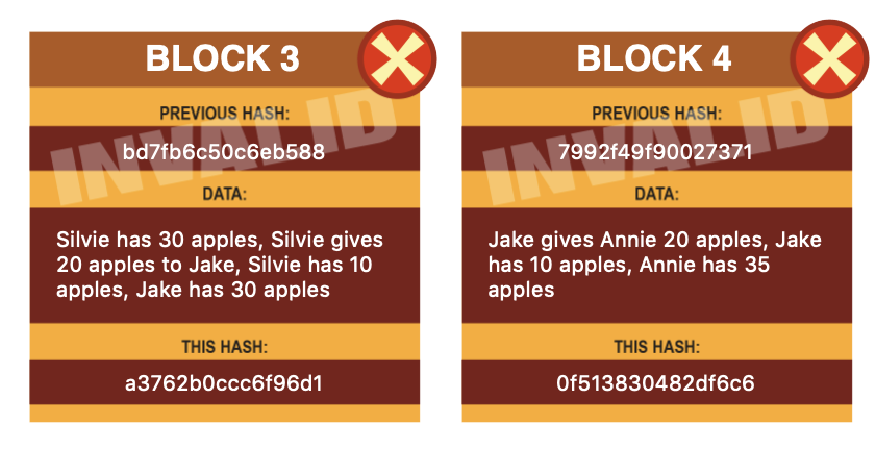
If data is altered in a block, then its hash and all following block hashes would change — and therefore become invalidated.
See what happens if you change the data in BLOCK 2.
Falsifying a single block will break the chain. This ensures that it is not possible to tamper with the data, and therefore a user can trust that the information has stayed the same since entry.
This is one copy of the blockchain. A distributed ledger would have many copies.
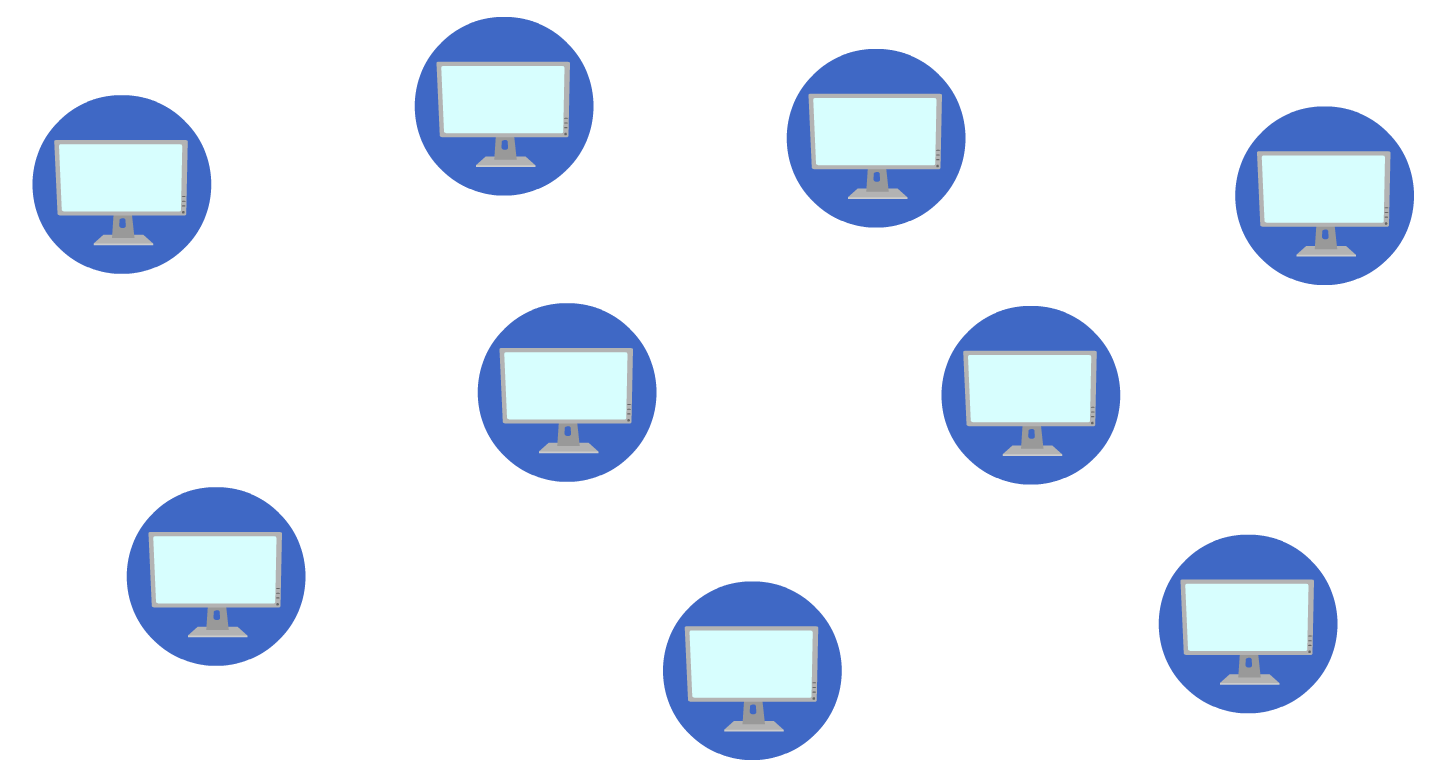
A distributed ledger is a record that is held, shared and synchronized across multiple entities.
A distributed ledger is managed by the participants, not a central authority. Each participant gets the information at the same time and audits by consensus.

Blockchain is a technology that allows digital information to be distributed in a tamper-free ledger.
Hashing is used as a way of linking blocks of data in a blockchain, ensuring that the data has not been tampered with, and therefore providing trust in its accuracy.

Blockchain implementation offers a multitude of use-cases. Key industries in focus include luxury goods, stone & minerals, pharma, cosmetics, e-commerce, oil & gas, food, automotive, footwear & fashion, media & entertainment, beverage, and electronics.
What are problems of trust within the business you support?
What customer experiences are limited by these problems?
Where could blockchain technology benefit your work?